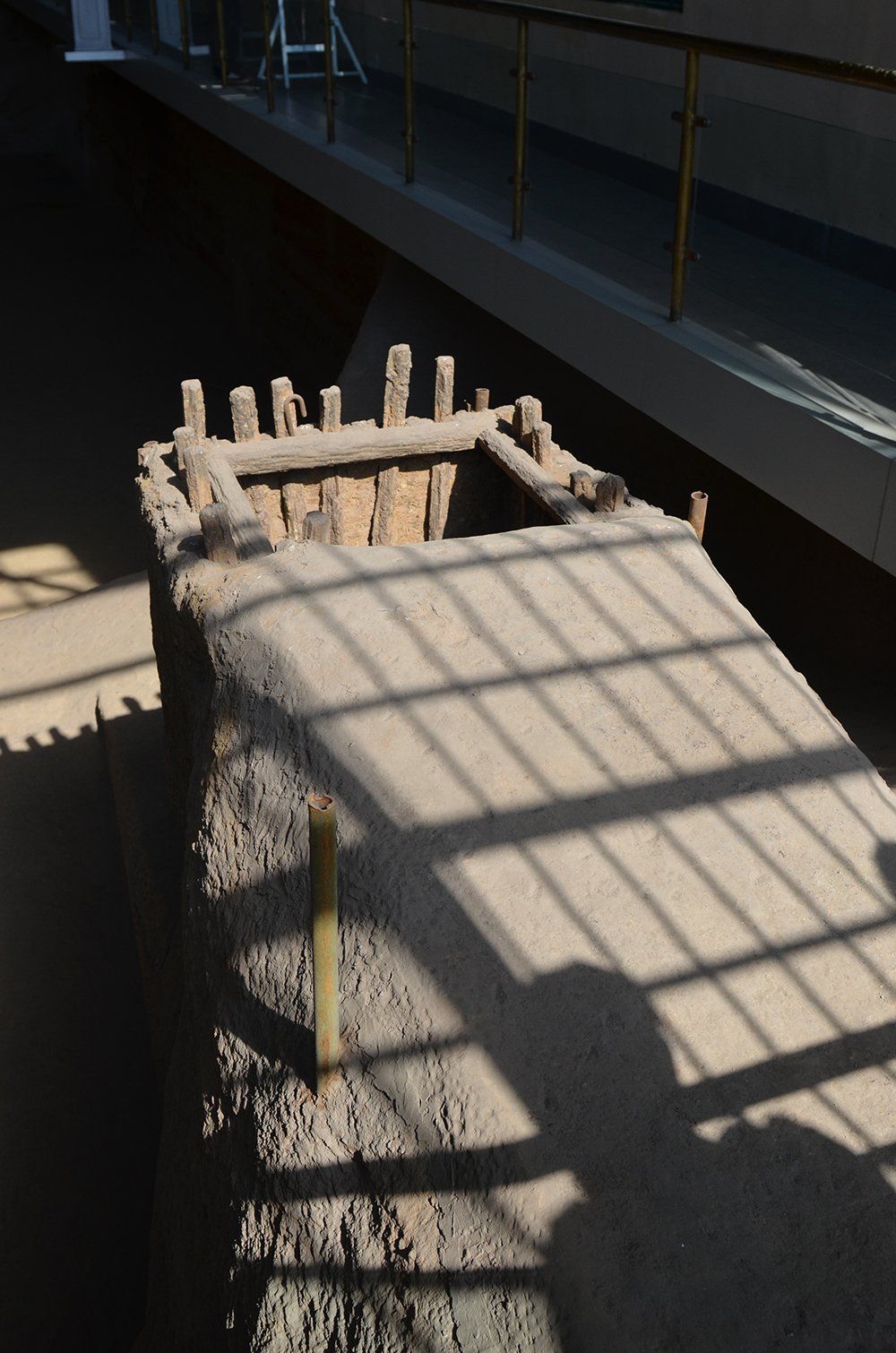The Tonglushan Copper Mine in ChinaVisit a 2,700 year-old Copper Mine in Hubei Province
By Thomas S. Elias, January, 2013
The Tonglushan Mine is now a historical site on the edge of Daye and is adjacent to a huge operating pit mine. Once there, we climbed an extensive series of steps to reach the flattened top of Mt. Verdigris. The ancient mine site covers about 20 acres and as we made our way along a path, we could see old slag heaps, various smelting furnace sites, and eventually a large building. As we entered, we saw a large piece of Daye malachite about 2 meters long—the largest specimen we have ever seen. The building covered the original main mine site and provided rooms for exhibits and support services. It was truly amazing to be staring down at the remains of a 2,700 mine. This was not a surface pit mine, but rather a complex mine consisting of numerous vertical shafts and a maze of horizontal shafts that ran for hundreds of meters. The early miners had dug three different levels of vertical and horizontal shafts, all by hand. We were surprised to see such a high level of technical skill and advancement that existed 2,700 years ago. Ancient wooden shovels, rakes, baskets, chisels, and pickaxes were on displayed along with dioramas depicting scenes from those ancient days. During later dynasties, portions of the mine, especially the supporting elements of the shafts were modernized and strengthened, but the work was still all done by hand.
The Daye Tonglushan Mine was not only important as a major, early copper producer, but one of the principle sites for the production of malachite that was used as viewing stones in China along with other practical uses.
After our visit to the mine, we headed into town to stop at several shops specializing in the sale of malachite specimens. We stopped at four shops and each offered many beautiful pieces of malachite in exquisite hand-carved bases. I was hoping for bargain prices and a wide range of Daye malachite to choose from. We were surprised to see that most of the specimens we were viewing were not Chinese malachite, but material recently imported from Africa. The stores had a few pieces of native malachite; only 5% to 10% of the items were Chinese. While, we knew that the Chinese were importing large quantities of African malachite along with copper ore; we did not realize how quickly African malachite has replaced the native material in the viewing stone markets. We were happy to see that each store owner or manager was forth right about the origin of the various pieces. Our next surprise came with the prices being asked for the material. While African malachite is sold by the kilogram or ton on the wholesale market, choice pieces suitable as viewing stones are expensive. For a nice specimen, expect to pay several hundreds of dollars to several thousand dollars. We were fortunate to be able to buy a single small piece of Daye malachite and a second larger piece from a mine in neighboring Anhui Province.
We left Daye late in the afternoon with an abundance of information and many photographs about the ancient copper mine and Daye malachite, and knowledge about the latest developments of the role of African malachite in Chinese stone appreciation. Chinese malachite is being replaced by imported malachite and many stone collectors will never know the difference. If you are interested in obtaining Chinese malachite, buy it now; in another few years quality Chinese specimens will be even rarer and extraordinarily expensive.


